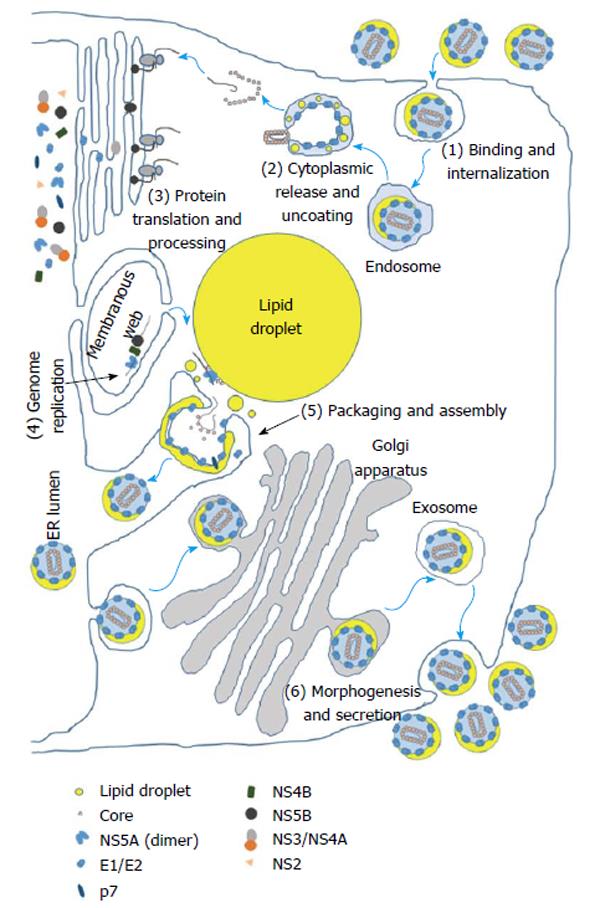Copyright
©The Author(s) 2016.
Figure 1 A schematic of the hepatitis C virus life cycle.
The six steps of the viral life cycle are indicated in colored boxes with numbers. (1) Binding and internalization. HSC70 is part of the viral particle and may play a role in viral entry. Also HCV internalization occurs at least in part through clathrin-mediated endocytosis which involves HSC70; (2) Cytoplasmic release and uncoating. The chaperone activity of E1 and E2 may be involved in membrane fusion that releases the core-encapsidated viral genome into the cytosol; (3) Protein translation and processing. HSP70, together with the DNAJA2 member of HSP40 co-chaperones, is the main chaperone involved in IRES-mediated translation of the viral genome, while HSP90 may play some role as well. Calnexin, calreticulin, and CypA are also involved; (4) Genome replication. HSP90, some members of HSP40 co-chaperones, TRiC/CCT, FKBP38, SigR1, and some Cyps are involved in viral genome replication. Core and NS3 may play some roles in genome replication as well; (5) Packaging and assembly. HSC70, PDI, and MTTP are the principal chaperones involved in infectious virion assembly, and Cyps also play important roles; and (6) Morphogenesis and secretion. MTTP which is involved in the VLDL pathway also plays important roles in viral particle maturation and secretion. Cyps are also involved. Cyp: Cyclophilin; ER: Endoplasmic reticulum; FKBP: FK506-binding protein; HCV: Hepatitis C virus; HSC70: Heat shock cognate protein 70; HSP: Heat shock protein; MTTP: Microsomal triglyceride transfer protein; NS: Non-structural; PDI: Protein disulfide isomerase; SigR1: Sigma non-opioid intracellular receptor 1; TRiC/CCT: TCP-1 ring complex/chaperonin-containing TCP-1; VLDL: Very low-density lipoprotein.
- Citation: Khachatoorian R, French SW. Chaperones in hepatitis C virus infection. World J Hepatol 2016; 8(1): 9-35
- URL: https://www.wjgnet.com/1948-5182/full/v8/i1/9.htm
- DOI: https://dx.doi.org/10.4254/wjh.v8.i1.9









